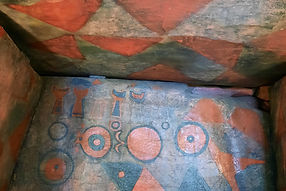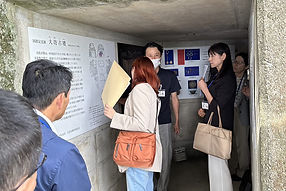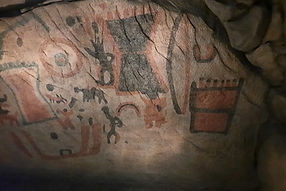





Scientific Direction: Dr. Claudia Zancan
Starting year: 2023
The island of Kyūshū has, since the Jōmon period, been a place of exchange and interaction with the cultures and peoples of the Yellow Sea and the Sea of Japan (East Sea), such as the Korean Peninsula and China. On this island formed the archipelago's first true pictorial and artistic expression: the decorated tombs called sōshoku kofun. This term refers to those tombs that feature motifs in relief, engraved and painted on the inner and/or outer surface of the sarcophagus and on the walls inside of the tomb or around its outer entrance.
The society behind the sōshoku kofun was not yet fully literate: images and symbols played a fundamental role in the transmission of cultural information and identity affiliation.
From the studies on the subject and the preliminary research conducted, it appeared central role of the symbols reproduced in the decorated tombs and their connection with the symbolic objects in the funerary context of the time. And it is in considering the meanings that these symbols had for contemporary society that may lie the right key to understanding the origin and nature of these tombs.
A given meaning, message or image, in fact, can be truly effective only when it is decoded correctly within the same cultural context that possesses the right codes to understand, absorb and eventually share it.
Not all tombs present the same repertoire of decorations, just as the reproduction of certain symbolic motifs is typical of some specific and well-defined areas of the island of Kyūshū. For this reason, it is crucial to understand what these symbols were intended to convey and why they were only reproduced in certain contexts and areas.
The project therefore aims to analyse the decorated tombs of Northern Kyūshū that present specific iconography and iconology, both of local and continental origin, in order to understand the underlying society and cultural codes shared through these decorative motifs.
The aim is to evaluate the hypothesis of the origin and 'hybrid' nature behind specific sōshoku kofun.

.jpeg)



